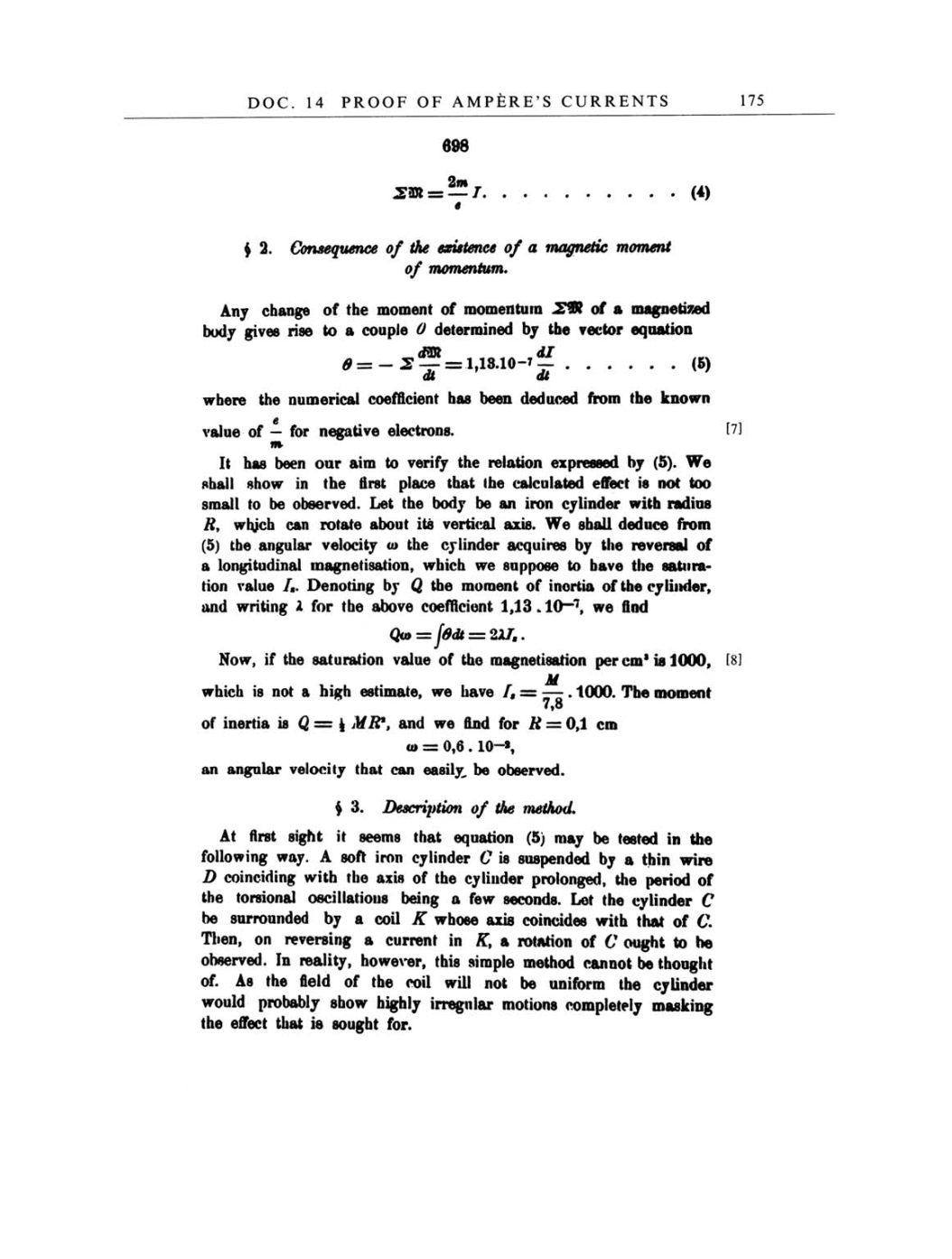DOC.
14
PROOF OF
AMPERE'S CURRENTS
175
698
53
=
-I
(4)
6
$
2.
Consequence
of the existence of
a magnetic
moment
of
momentum.
Any
change
of the
moment
of momentum
ER
of
a magnetized
body
gives
rise to
a couple
0 determined
by
the vector
equation
»
=
-
a
"=j
(5)
where
the
numerical
coefficient has
been
deduced from
the known
value of
e/m
for
negative
electrons.
[7]
It has
been
our
aim
to
verify
the relation
expressed
by (5).
We
shall
show
in
the
first
place
that
the
calculated
effect is not too
small to
be
observed. Let the
body
be
an
iron
cylinder
with radius
R,
which
can
rotate
about
its
vertical
axis.
We shall deduce from
(5)
the angular
velocity
co
the
cylinder acquires
by
the reversal of
a
longitudinal magnetisation,
which
we suppose
to
have the
satura-
tion value
I2.
Denoting
by Q
the
moment
of inertia of
the
cylinder,
and
writing
2
for
the
above
coefficient 1,13.10-7,
we
find
Qua
=
jßdt
=
2XT,.
Now,
if
the
saturation value
of
the
magnetisation
per cm3
is
1000,
[8]
which
is
not
a
high
estimate,
we
have
I2
= M/7,8.
1000.
The
moment
7,8
of
inertia
is
Q
=
1/2
MR2,
and
we
find
for
R
=
0,1
cm
co =
0,6.10-2,
an
angular
velocity
that
can
easily
be
observed.
$
3.
Description
of the
method.
At first
sight
it
seems
that
equation
(5) may
be
tested in
the
following way.
A
soft iron
cylinder
C
is
suspended
by a
thin wire
D
coinciding
with
the axis of
the
cylinder prolonged, the
period
of
the torsional
oscillations
being a
few seconds. Let the
cylinder
C
be
surrounded
by
a
coil
K
whose axis
coincides with that of
C.
Then,
on reversing a
current
in
K, a
rotation of C
ought
to
be
observed. In
reality, however, this
simple
method cannot
be
thought
of. As the field
of
the coil will not be uniform
the
cylinder
would
probably
show
highly irregular
motions
completely masking
the effect
that is
sought
for.
